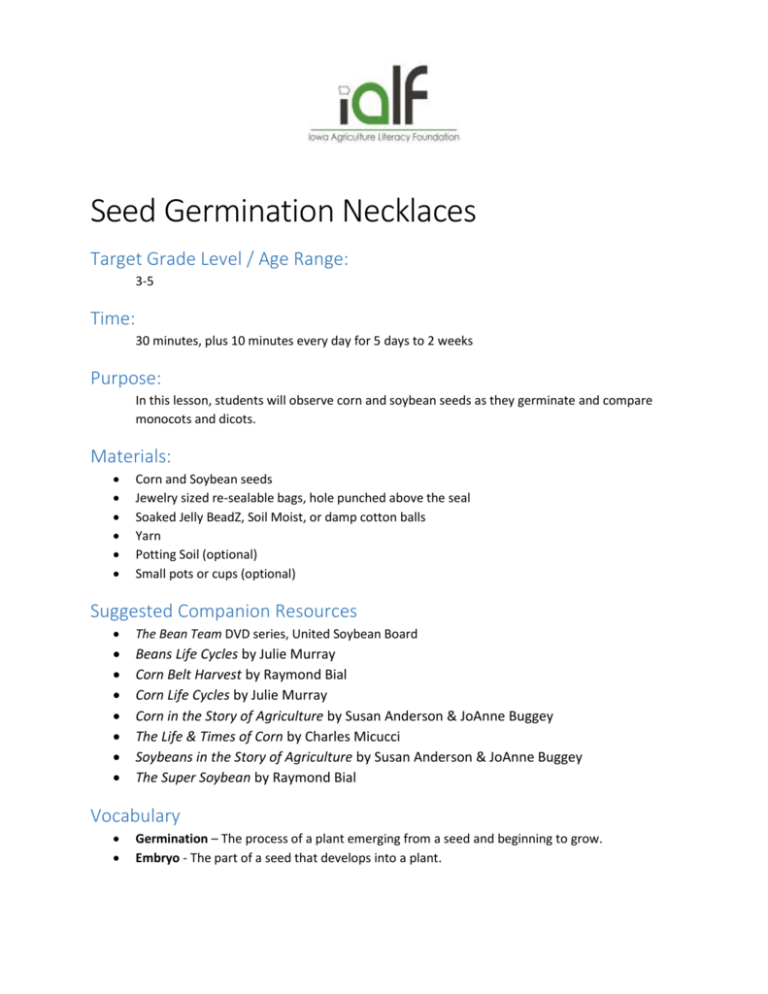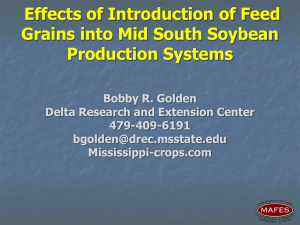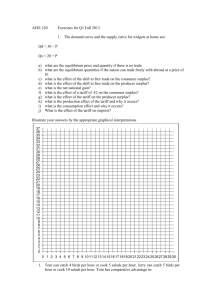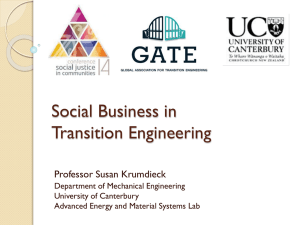- Iowa Agriculture Literacy Foundation
advertisement

Seed Germination Necklaces Target Grade Level / Age Range: 3-5 Time: 30 minutes, plus 10 minutes every day for 5 days to 2 weeks Purpose: In this lesson, students will observe corn and soybean seeds as they germinate and compare monocots and dicots. Materials: Corn and Soybean seeds Jewelry sized re-sealable bags, hole punched above the seal Soaked Jelly BeadZ, Soil Moist, or damp cotton balls Yarn Potting Soil (optional) Small pots or cups (optional) Suggested Companion Resources The Bean Team DVD series, United Soybean Board Beans Life Cycles by Julie Murray Corn Belt Harvest by Raymond Bial Corn Life Cycles by Julie Murray Corn in the Story of Agriculture by Susan Anderson & JoAnne Buggey The Life & Times of Corn by Charles Micucci Soybeans in the Story of Agriculture by Susan Anderson & JoAnne Buggey The Super Soybean by Raymond Bial Vocabulary Germination – The process of a plant emerging from a seed and beginning to grow. Embryo - The part of a seed that develops into a plant. Cotyledon – Part of the embryo within a seed. The cotyledon(s) provide nutrients (food) for the germinating plant. In some plants, they form into the first leaves of the plant, called cotyledon or seed leaves. Monocot – A flowering plant with an embryo that has one cotyledon. Grass and corn are examples of monocots. Interest Approach or Motivator Show students corn and soybean seeds. Ask them: o What do they have in common? o How are they different? o What do seeds need to grow? Background – Agricultural Connections Farmers in Iowa are the country’s biggest producers of corn and soybeans. These plants germinate in the ground the same way they do in the seed germination necklaces. Farmers care for them from planting until harvest. Corn and soybeans are found in many items that we use every day, including plastics, corn chips, and even cake! They can also be feed to livestock and made into biofuels. Procedures 1. Place moistened JellyBeadZ, soil moist, or cotton ball in into the hole-punched jewelry sized bag. If using a cotton ball, squeeze out excess water before putting it in the bag. 2. Push two corn and two soybean seeds into the bag. 3. Seal the bag and run yarn through the hole to create a necklace. 4. Ask students to wear their bags around their necks or place them in a warm place and observe them every day. Optional: Divide the class into groups to compare different temperature and light conditions (Inside shirt, outside shirt, refrigerator, desk drawer, sunny window, outside, etc.) 5. During the observation period, ask students to record daily journal entries using full sentences and good grammar to describe what they see. 6. If you would like to continue the experiment, transplant the germinated seeds into a cups of soil. Watch them continue to grow and compare the leaves and roots of corn and soybean plants. 7. After the seeds have sprouted in the bags or they have developed leaves after transplanting, ask students to draw and label the parts of corn and soybeans. If you have transplanted the seeds into pots, carefully remove the plants from the soil and compare the roots of the corn and soybean plants. 8. After the experiment is complete, have students write a reflection paper explaining what they witnessed and what they think happened considering all the results of the experiment. Include a comparison of the corn and soybean seeds, differences in temperature and light conditions, and other observations. Did you know? (Ag facts) Iowa is the country’s largest producer of corn and soybeans. Both crops are planted in the spring and harvested in the fall. Most of the corn grown in Iowa is dent corn, also called field corn. Dent corn is fed to animals, made into ethanol, and used to make foods like corn chips, cereal, corn bread, and candy. Corn’s scientific name is Zea Mays L. In some countries corn is called maize. The soybean or is a species of legume native to East Asia, widely grown for its edible bean which has many uses. Soybeans are used to feed livestock, make biodiesel, and processed into many food and household products. The scientific name for soybean is Glycine Max. Enrichment Activities Ask students to develop a list of corn and soybean products by looking at food labels and researching non-food uses. Compare findings as a class or in small groups, and develop a master list of food and non-food uses. Examples include: o Soybeans: vegetable oil, soymilk, tofu, soy sauce, cakes, cookies, crayons, ink, animal feed, and biodiesel. o Corn: cereal, tortillas, corn chips, candy, soda, pancake syrup, toothpaste, biodegradable packing peanuts plastic, makeup, diapers, animal feed, and ethanol. Sources/Credits Original creator of the seed or living necklace experiment unknown. Author(s) Cindy Hall, IALF Kelsey Faivre, IALF Organization Affiliation Iowa Agriculture Literacy Foundation Agriculture Literacy Outcomes Plants and Animals for Food, Fiber & Energy Distinguish between renewable and non-renewable resources used in the production of food, feed, fuel, fiber and shelter. Explain how the availability of soil nutrients affects plant growth and development. Agriculture and the Environment Explain how the interaction of the sun, soil, water, and weather in plant and animal growth impacts agricultural production. Science, Technology, Engineering & Math Provide examples of science being applied in farming for food, clothing, and shelter products. Education Content Standards Science: Develop models to describe that organisms have unique and diverse lifecycles but all have in common birth, growth, reproduction, and death. (3-LS-1) Construct an argument that plants and animals have internal and external structures that function to support survival, growth, behavior, and reproduction. (4-LS-1) Support an argument that plants get the materials they need for growth chiefly from air and water. (5-LS-1) Common Core Connections Language: Anchor Standards Demonstrate command of the conventions of standard English grammar and usage when writing or speaking. (CCSS.ELA-LITERACY.CCRA.L.1) Demonstrate command of the conventions of standard English capitalization, punctuation, and spelling when writing. (CCSS.ELA-LITERACY.CCRA.L.2) Iowa Core Science Connections o o Understand and apply knowledge of organisms and their environment. (S.3 -5.LS.1) Identify and generate questions that can be answered through scientific investigations. (S.3 -5.SI.1)







